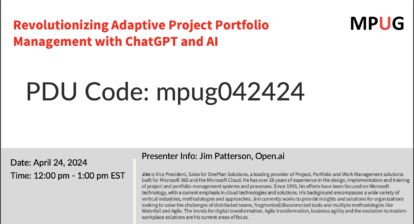 Dear Elizabeth:
Dear Elizabeth:
I work on a project team for a manufacturing company. For the last year, we’ve been using ranged estimates to build out our schedules. For the most part, our customers love it. We have one customer who is putting up a fight, saying they want a hard deadline. How do we convince them to go with a two-point estimate? –Living in Reality
Dear Reality:
Ranged estimates are awesome, so I’m totally with you on that one. I’m not surprised that most of your customers love the way you schedule.
I would start a campaign of education: Talk to your customers about why two-point estimates are actually a more mature and realistic way of scheduling and why that should give them more confidence. Talk about transparency and managing risk. Talk about why your other customers like it and the benefits that they have seen because they’ve used dynamic planning. Using case studies and real examples are also a winner when it comes to convincing others.
In this conversation go back to the beginning, and talk about why your customer chose you: because your company has a mature and professional approach to doing the work, supported by cutting-edge tools and methodologies including ranged estimates, which puts you ahead of competitors (and by association, gives them a boost too).
In the event you fail to convince your customer to go with ranged estimates, here’s something to consider. Could you use ranged estimates for your internal planning and then only publish the later of the two points to your client? They’ll get the worst case scenario but it meets their requirement of a single date and gives you the flexibility to use ranged estimates as you intend.
And if you come in earlier, you’ll have fair notice to let them know. They might even be pleased about it!
Every month, project management expert, Elizabeth Harrin, fields readers’ questions about the challenges, risks, and rewards of project work on the LiquidPlanner blog. This selection is used with permission.
Related Content
Webinars (watch for free now!):
Task Planning using Microsoft Project
What’s the value of Schedule Risk Analysis?
Articles:
Levels of Project Scheduling Proficiency
Are You Using the Team Planner View Feature in Microsoft Project?
Resource Leveling: Scheduling vs. Leveling








SonyaC
I have had leadership who would only accept a single date or single number for anything. It took me several years to get in their head to understand what on earth could they be thinking. What I’ve found so far – and this is still pretty imperfect – is they are black & white thinkers. All or nothing. Success or failure. Done or not done. Up or down. There is no grey area to them, no middle ground. A range means (to them) that you don’t know what you’re doing and they can’t trust you. This view is highly risky and counter productive, not to mention a morale killer, but these kinds of stakeholders will never change. They say things that sound brutal and don’t bat an eyelash. No amount of progress is good enough until it’s complete. If it’s not a booming success for them, it’s an utter failure. There are no incremental wins. Conquering big issues along the way doesn’t even register. Creative problem solving doesn’t register. There are no maybes in this world. To me, that feels like walking on legos barefooted.
Even if it makes you uncomfortable, you have to speak in terms of absolutes to win trust and confidence – even when there are none. The other thing you have to figure out early on is their tolerance for replacement “constants”. You had to give an absolute finish date last month. This month the forecast says different with high confidence. You need to have a stakeholder management plan based on analysis to know how to deliver that news. They will not want context unless they ask for it – and they probably won’t. Communicating with black/white or rigid thinkers is a very special skill you can cultivate, but you have to be the one to put the effort in. Never hedge or waffle. Never contextualize. It’s looked at as weakness and incompetence.